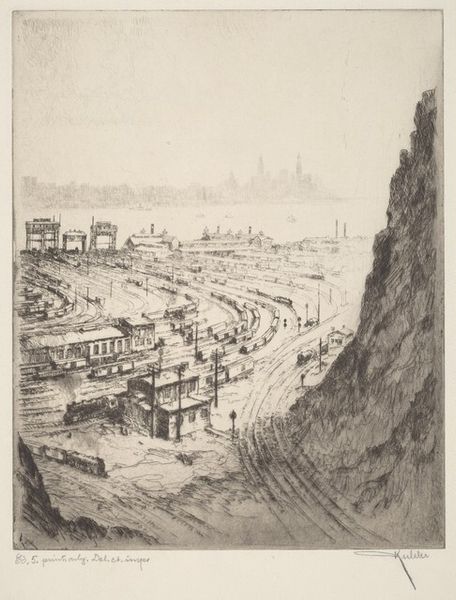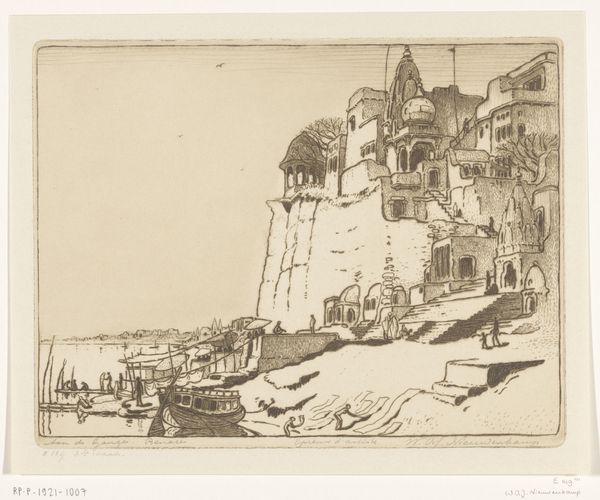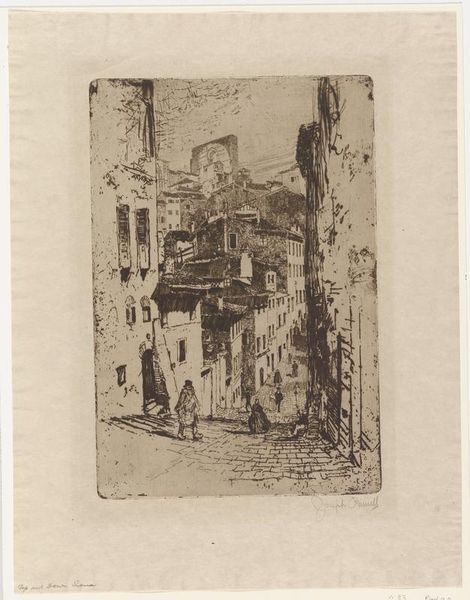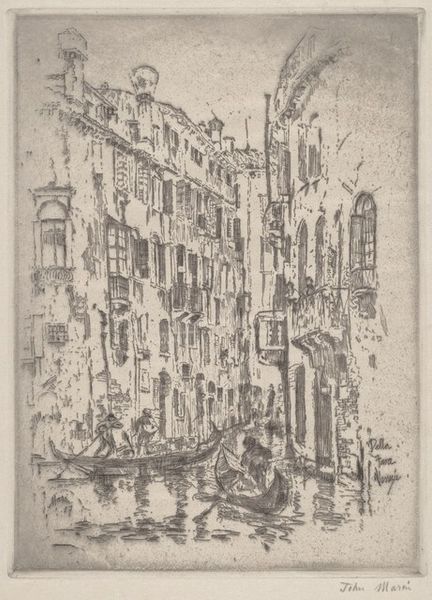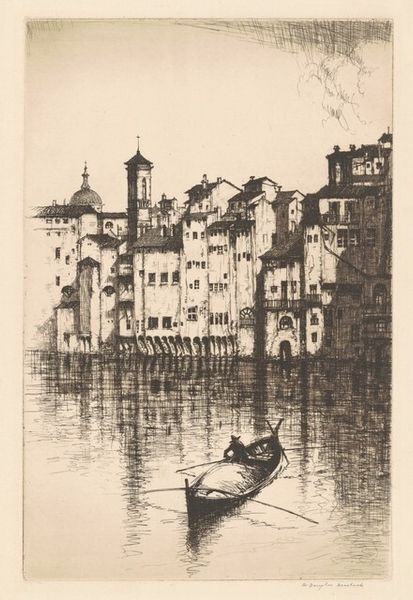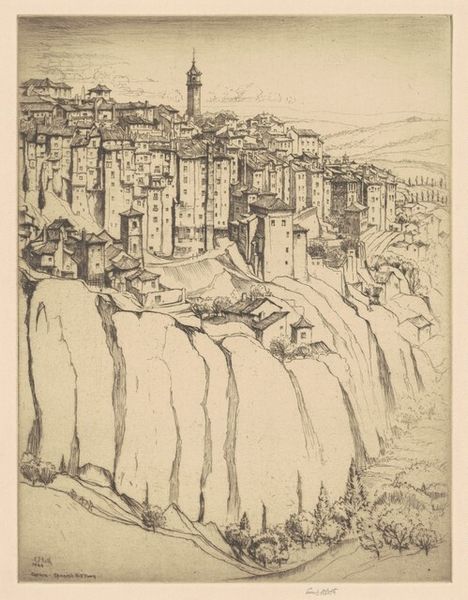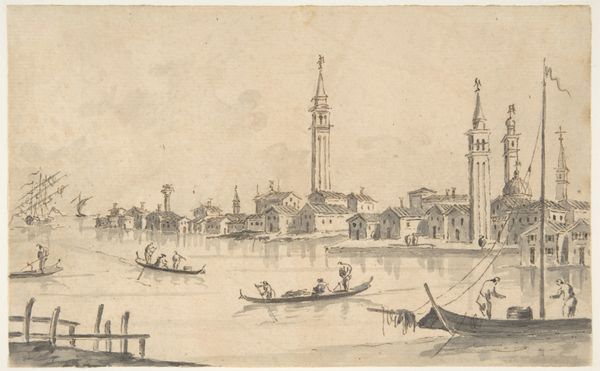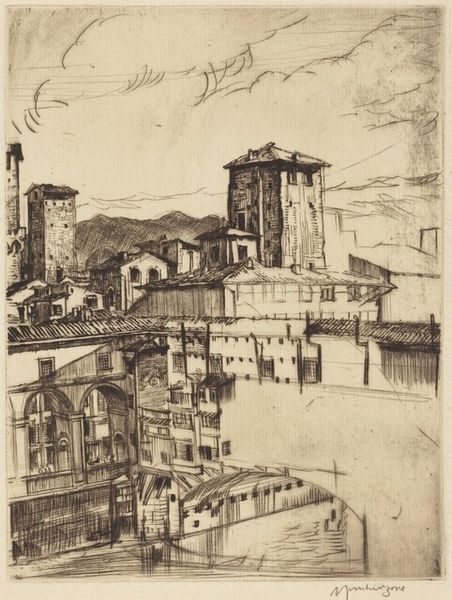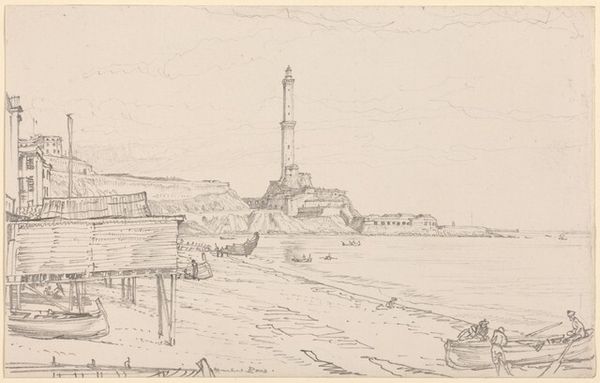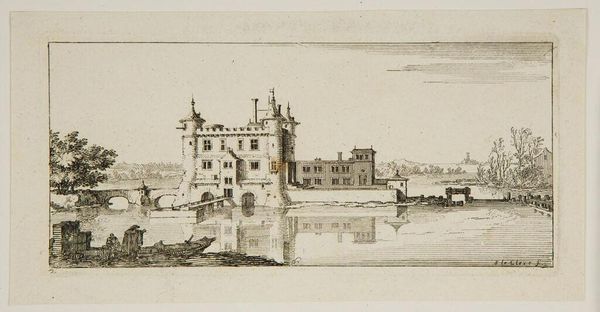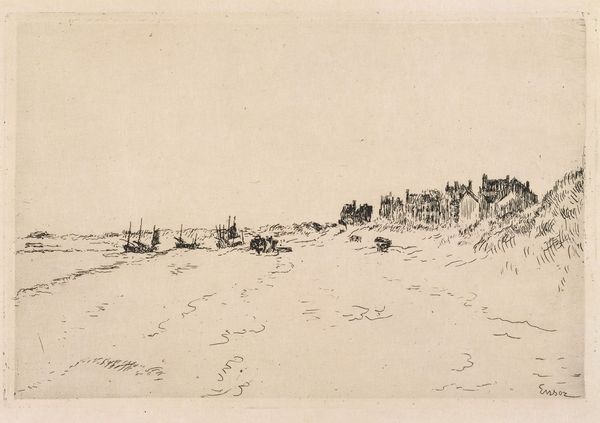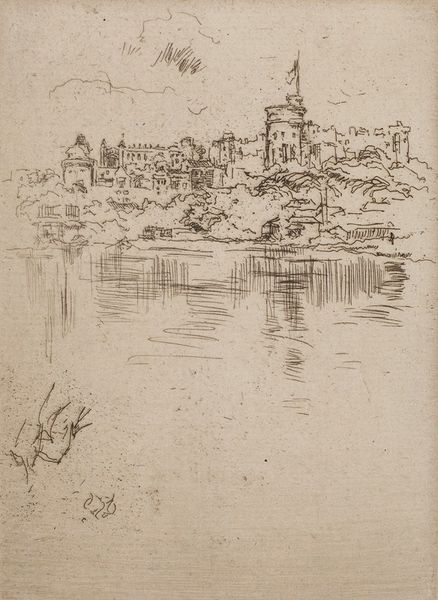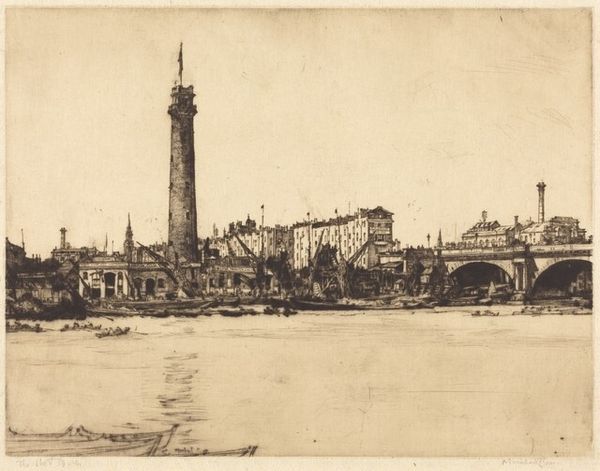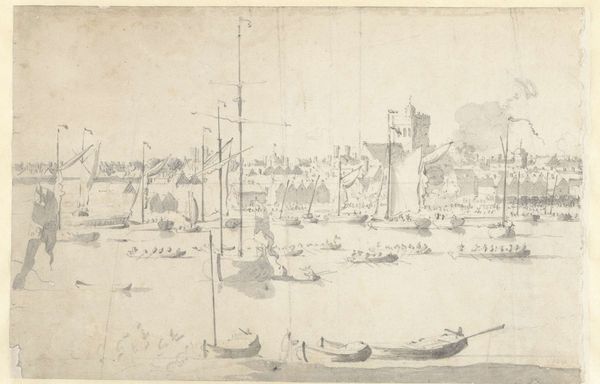
drawing, print, etching, ink
#
drawing
#
aged paper
#
light pencil work
# print
#
etching
#
pencil sketch
#
asian-art
#
old engraving style
#
sketch book
#
landscape
#
personal sketchbook
#
ink
#
pen-ink sketch
#
pen work
#
sketchbook drawing
#
sketchbook art
Dimensions: plate: 25.08 × 20.16 cm (9 7/8 × 7 15/16 in.) sheet: 29.21 × 21.91 cm (11 1/2 × 8 5/8 in.)
Copyright: National Gallery of Art: CC0 1.0
Curator: Looking at this piece, I'm immediately drawn to the sheer intricacy achieved through such delicate lines. Editor: I'm interested to learn that this is "Benares, No. 1" an etching crafted by Ernest Stephen Lumsden around 1912. It presents a fascinating interplay between architecture and the landscape. The texture of the paper itself seems integral to the work. Curator: Precisely. Note how the composition guides the eye—starting with the detailed structures atop the rising bank, moving downward towards the water where we see people arriving by boat. The perspective is very well controlled. There's an undeniably timeless quality to it. Editor: What stands out to me is the clear depiction of labor implied along the ghats, from construction materials piled along the shoreline to those manning boats on the water. It prompts questions about Lumsden's encounter with this city and what type of economy he's emphasizing through his materials. Curator: Indeed, and this is all achieved through simple marks on a flat plane. If you look closely, you'll see that Lumsden employed a varied vocabulary of lines; the heavier marks define structure, while light, almost invisible strokes add dimension and atmosphere. Notice the contrast with those figures approaching. It seems to frame a spiritual encounter, or a simple return home. Editor: And that labor appears relentless. I can't help but view those ghats as sites of ritual purification and commercial exchange. Perhaps it even questions our modern understanding of sanitation with bodies potentially in direct contact with run-off water. Do the formal elements mask this material reality? Curator: That tension you've highlighted invites a richer understanding. The formal elements invite an experience where the content itself is deeply embedded within the artistry. Editor: Reflecting on this, the true richness of the work lies in how Lumsden’s detailed technique serves to also highlight labor, rituals, and resource consumption in the urban fabric of Benares. Curator: Ultimately, through Lumsden's craft we can still perceive the eternal in something temporal.
Comments
No comments
Be the first to comment and join the conversation on the ultimate creative platform.
